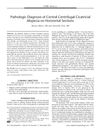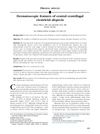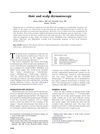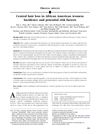Central Centrifugal Cicatricial Alopecia Presenting with Irregular Patchy Alopecia on the Lateral and Posterior Scalp
January 2015
in “
Skin appendage disorders
”
TLDR The report found a new type of hair loss in African-American women that affects more areas of the scalp than previously thought.
The study identified a new clinical variety of Central Centrifugal Cicatricial Alopecia (CCCA) in 14 African-American women, characterized by patchy alopecia on the lateral and posterior scalp, in addition to the central scalp. Dermatoscopy and pathology were crucial in distinguishing this variety from traction alopecia, which was commonly associated in 10 patients. The findings emphasized the importance of these diagnostic tools to avoid misdiagnosis, revealing features such as peripilar white-gray halos, broken hairs, follicular dropout, perifollicular fibrosis, and mild inflammatory infiltrate.











